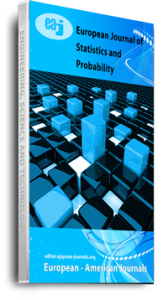The question of when an HIV patient should be subjected to therapy using highly active antiretroviral therapy (HAART) is very challenging. The direct application of the existing probabilistic models, like the stationary Markov Chain for the determination of the life expectancies of patients and their absorption probabilities might not always be reliable. In this work, we propose the smoothed non-stationary Markov chain approach which is conceptually efficient than the stationary Markov chain and non-stationary Markov chain models. We examined a total of 1094 HIV patients (cohort) from January – December 2012 with follow-up in their CD4 cell transition counts, collected from the Medical Examination Department of the Nnamdi Azikiwe University Teaching Hospital, Continuous Quality Improvement HIV Care Unit (NAUTH), Nnewi – Anambra State – Nigeria. The patients were grouped into five immunological states developed by Guiseppe Di Biase et al (2007). The five states considered were as follows: state one (CD4 > 500 cells/mm3), state two (350 < CD4 ≤ 500 cells/mm3), state three (200 < CD4 ≤ 350 cells/mm3), state four (CD4 > 200 cells/mm3), state five (Death). These states define the seriousness of the sickness based on the epidemiological state of the patients CD4 cell counts. The estimation of the smoothed non-stationary probabilities were computed using the exponential smoothing technique. The results obtained show that patients in state I, state II, State III, and state IV, have the following absorption probabilities: 0.6159, 0.6080, 0.5915 and 0.6122. The results also show that the absorption probabilities of patients with low CD4 counts do not differ appreciably from patients with higher CD4 cell counts, meaning that low CD4 cell counts do not generally imply a faster rate of absorption of patients suffering from the infection [Osisiogu U. A., Nwosu C. A (2013)], studies have shown that patient’s age is a relevant factor to the rate of absorption.
Keywords: Absorption Probability, CD4 cell counts, Exponential Smoothing Technique, Immunological States., Smoothed Non-stationary Markov Chain Model

